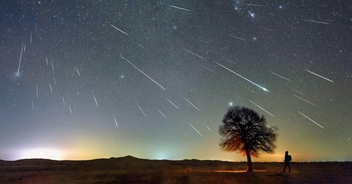As reported by MailOnline, an enormous star 1,400 times larger than the Sun could be about to explode, astronomers claim.
The star in question, Betelgeuse, is a massive, luminous star in the constellation of Orion and has noticeably become fainter since the fall. This seems to indicate that it is preparing to go supernova, according to some scientists.
In fact, a number of scientists from all over the world have taken to Twitter to announce the possibility of the impending explosion of Betelgeuse.
While the star's brightness always varies and is no stranger to periods of dimming, astronomers believe this latest period of dimming appears to be different.
Science writer and journalist Corey S. Powell wrote on Twitter: "If #Betelgeuse goes supernova, the blast will take 20,000-100,000 years to reach us, and the Sun's magnetic bubble will shield us. So enjoy."
Powell has since shared a number of tweets explaining the process of a supernova.
While NASA's Juno spacecraft was orbiting Jupiter, it captured this striking footage:Scientists have revealed that Betelgeuse is the faintest it has been in 50 years of observations, according to MailOnline.
"Betelgeuse is dimming, which is an indication that it will go supernova soon - when we don’t exactly know," tweeted space security expert Dr. Malcolm Davis. "When it happens (it would have actually happened ~690 years before we see it on Earth given the star’s distance) it will be as bright as the full moon."
"When the weather gives you a chance, get out and have a look at the bright red giant star Betelgeuse in the right shoulder of Orion. It looks like it may have dimmed quiet a bit. Betelgeuse can be quite variable, and has a complex light curve," Astronomer Dave Eagle shared on social media.
He continued "It has done something like this before. But it is the faintest the star has been for 25 years. If you listen to Brian Cox, he will tell you that Betelgeuse is likely to go supernova at any time. But is it just about to? Probably not!"
"Whatever happens it will be worth watching. A supernova within our galaxy is a once in a lifetime spectacle," tweeted physics teacher Dr. David Boyce.

.jpg_dOahs3?tr=h-184)
